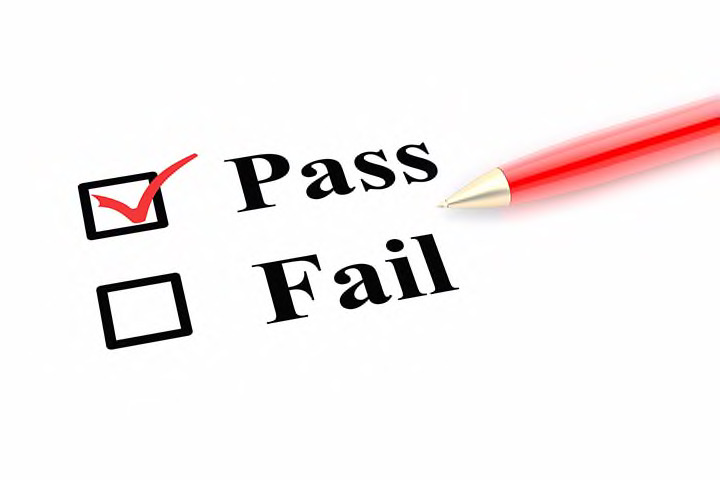If you want to go to medical school, you’re going to take a lot of tests. You have to take the MCAT just to get into medical school. Then, between your second and third years of medical school, you’ll take USMLE Step 1. Since everyone has to take it, in this article, we’re going to talk about everything you to need to know for this exam.
We’ll cover:
- What is USMLE Step 1?
- How to schedule your exam
- How to prepare for the exam
- What to expect on your test day
- What material is covered on USMLE Step 1?
- How does grading work for USMLE Step 1?
- When are USMLE Step 1 Scores available?
- What is First Aid USMLE Step 1?
- What if I don’t pass USMLE Step 1?
- Can I retake the test if I don’t like my USMLE Step 1 Scores?
What is USMLE Step 1?
USMLE stands for the United States Medical Licensure Exam. The exam consists of Step 1, Step 2 and Step 3, but only Step 1 is taken after your second year of medical school. Step 1 is our focus today.
USMLE Step 1 is designed to test your scientific knowledge and your ability to apply that knowledge to medical situations. It’s taken after your second year of medical school. The exam is taken at this time because you’ve taken all the necessary coursework to be able to pass the exam. The exam is taken before your clinical clerkships, when you’ll work directly with patients in clinical and hospital settings (with supervision, of course).
How to Schedule Your Exam
U.S. and Canadian students will schedule the USMLE Step 1 Exam through the National Board of Medical Examiners. Students outside the U.S. or Canada will schedule the test through the Educational Committee for Foreign Medical Graduates. U.S. and Canadian students will pay $645 to take the exam.
Scheduling your exam is done online. You’ll want to schedule the exam as far in advance as you can to ensure there’s an open spot for you when you plan to test. You’ll begin by registering at this link. Once your registration has gone through, you’ll receive your USMLE ID via email. This typically takes about one day. Once you have your ID, you can log in and schedule your exam. Foreign students will schedule their exam through the Educational Committee for Foreign Medical Graduates website.
How to Prepare for the Exam
We recommend taking USMLE Step 1 between one to two months after finishing your second year of medical school. You’re required to take it before you begin your clerkships. But we don’t recommend taking it the day after finals because your brain will be too exhausted to function at its peak. You want to do well on this exam!
We recommend giving yourself time to study all the material that you’ve learned so far. Taking USMLE Step 1 in this time frame will give your brain a chance to recover while keeping all the information you’ve learned fresh in your mind. You won’t have time to forget what you need to know.
All the material you’ve learned in your first and second years will be vital to passing USMLE Step 1. Your USMLE Step 1 Scores depend on how well you study. Study your textbooks, your notes, test results and any other materials you have. You can also use the official resources that USMLE offers. They have useful content that will help you prepare for the exam.
What to Expect on Your Test Day
Your test day will be a long day, so you’ll want to get plenty of sleep the night before. You’ll want to bring snacks with you for when you get hungry during the exam. We recommend packing snacks that are high in protein because you won’t have time for a lunch break. A peanut butter and jelly sandwich, a protein bar, dried fruit or nuts are examples of good snacks to bring.
Your test will begin in the morning, and it will last all day. Most testing centers are strict, and this exam is no different. You may bring a pair of soft foam earplugs if you need silence while taking the exam. If you don’t wear earplugs, you’ll hear the sounds all the other test takers make. That includes the clicking sound of a computer mouse. If you think the sound might drive you crazy, bring a pair of earplugs. You’re better safe than sorry when taking an important clinical board exam.
But you can’t bring anything else with you. You can’t listen to music, check your phone or even wear a jacket. For this reason, we recommend wearing a long-sleeved shirt and pants. Avoid anything super heavy that you’ll sweat through if you get nervous. But don’t wear a tank top and shorts, or you’ll be freezing all day. Being comfortably dressed will allow you to concentrate on the exam. This is critical since you only have one minute and 30 seconds to answer each question.
USMLE Step 1 is taken on a computer, so you don’t need to worry about bringing supplies. During the exam, you’ll be given six breaks. Each break will last for seven-and-a-half minutes. But if you finish any of the sections early, you can add that time to your break time. We can’t estimate how much time you might accumulate from finishing early. But we don’t recommend rushing through any of the sections. If you have extra time, it’s a good idea to review your answers before taking a break. After all, this is a very important exam.
What Material is Covered on USMLE Step 1?
The test is divided into seven, 60-minute blocks that are spread out over the course of eight hours. The extra hour includes all of your break times and a 15-minute tutorial at the beginning of the test. The tutorial is optional. If you want to, you can show up after the tutorial when the test officially begins. We don’t recommend skipping the tutorial unless you’re completely confident on how to take the test.
Here is the content that you can expect to see on the exam.
General Principles
- Blood & Lymphoreticular/Immune Systems
- Behavioral Health & Nervous Systems/Special Senses
- Musculoskeletal, Skin & Subcutaneous Tissue
- Cardiovascular System
- Respiratory & Renal/Urinary Systems
- Gastrointestinal System
- Reproductive & Endocrine Systems
- Multisystem Processes & Disorders
- Biostatistics & Epidemiology/Population Health
- Social Sciences: Communication and Interpersonal Skills
Competency
- Medical Knowledge: Applying Foundational Science Concepts
- Patient Care: Diagnosis
- Patient Care: Management
- Communication and Interpersonal Skills
- Practice–based Learning & Improvement
System
- Pathology
- Physiology
- Pharmacology
- Biochemistry & Nutrition
- Microbiology
- Immunology
- Gross Anatomy & Embryology
- Histology & Cell Biology
- Behavioral Sciences
- Genetics
For more detailed information, visit the official USMLE website.
What is First Aid USMLE Step 1?
First Aid USMLE Step 1 is a book published by McGraw-Hill Education. It uses the principles of First Aid to help you prepare for the exam. It’s known to be highly effective and is used by many students. It shouldn’t be your only study aid, but it’s worth consideration.
If First Aid becomes part of your study regimen, we recommend reading and annotating as you go. But we also suggest going through the practice questions. Too much reading but not enough practicing can result in knowledge that you don’t know how to apply to a specific situation. USMLE Step 1 is all about applying your knowledge to specific situations.
First Aid is formatted in the following manner:
Section 1 – Guide to Efficient Exam Preparation
- Introduction
- Test-Taking Strategies
- USMLE Step 1-The Basics
- Clinical Vignette Strategies
- Defining Your Goal
- If You Think You Failed
- Learning Strategies
- Testing Agencies
- Timeline for Study
- References
- Study Materials
Section 2 – High-Yield General Principles
- How to Use The Database
- Biochemistry
- Immunology
- Microbiology
- Pathology
- Pharmacology
- Public Health Sciences
Section 3 – High-Yield Organ Systems
- Approaching The Organ Systems
- Cardiovascular
- Endocrine
- Gastrointestinal
- Hematology and Oncology
- Musculoskeletal, Skin and Connective Tissue
- Neurology and Special Senses
- Psychiatry
- Renal
- Reproductive
- Respiratory
- Rapid Review
Section 4 – Top Rated Review Resources
- How To Use The Database
- Question banks
- Web and mobile apps
- Comprehensive review material
- Individual textbooks for the following disciplines:
Anatomy, Embryology, Neuroscience, Behavioral Science, Biochemistry, Cell Biology and Histology, Microbiology and Immunology, Pathology, Pharmacology and Physiology
If you think First Aid would be a useful tool for you, you can purchase it on Amazon or through the McGraw-Hill Education website.
How Does Grading Work for USMLE Step 1?
Changes in grading for USMLE Step 1 have been announced. As of January 26, 2022, the test will become pass/fail. We talk about this in-depth here. But until then, the minimum passing score is a 194.
When are USMLE Step 1 Scores Available?
It takes about a month for scores to become available. They are posted online every Wednesday. But don’t check USMLE.org for your test results. They will be available on the website where you registered for the exam. U.S. and Canadian students will get their test results through the National Board of Medical Examiners. Foreign students will receive their test results through the Educational Commission for Foreign Medical Graduates.
You’ll receive an email from NBME or ECFMG when your results are available. You’ll be taken to a portal where you can log in and see your USMLE Step 1 scores.
What if I don’t Pass USMLE Step 1?
It’s okay if you don’t pass USMLE Step 1 on your first try. It’s a difficult exam that will test your knowledge and your ability to think quickly. You can retake the exam up to three times in a 12-month period. If you still don’t pass, you’ll have to wait for six months between each attempt after your first three. You may take the test up to six times total.
Can I Retake USMLE Step 1 to Earn a Better Score?
No, you cannot retake the exam for a better score. USMLE Step 1 doesn’t work that way. You either pass, or you don’t. This might seem strange or feel confusing since you can retake the MCAT for a higher score. But the MCAT isn’t a board exam that certifies your knowledge before you begin your clerkships. If you’ve passed the exam, then you’ve proved that your knowledge is sufficient to begin interacting with patients in clinical and hospital settings.
Additionally, because all medical students are required to take USMLE Step 1, re-taking the exam for a better score could take up a spot that another student needs.
Conclusion
We hope you feel more prepared for USMLE Step 1. If you have any questions, please don’t hesitate to reach out to us. Here at International Medical Aid, we offer residency admissions consulting services and medical electives abroad. If you’re preparing for USMLE Step 1, you’re likely preparing for residency as well.
Through our residency admissions consulting services, our expert consulting team will walk you through the process of applying to different residencies. We’ll answer any questions you might have and even review your application before you submit it.
Our medical electives abroad will provide you with hands-on experience. Seeing medicine practiced before your very eyes will help you see how medicine is applied in real-life settings.
Whether it be residency admissions consulting services, medical electives abroad, questions about USMLE Step 1 Scores or anything in between, International Medical Aid is here to help. Contact us today to get started.








